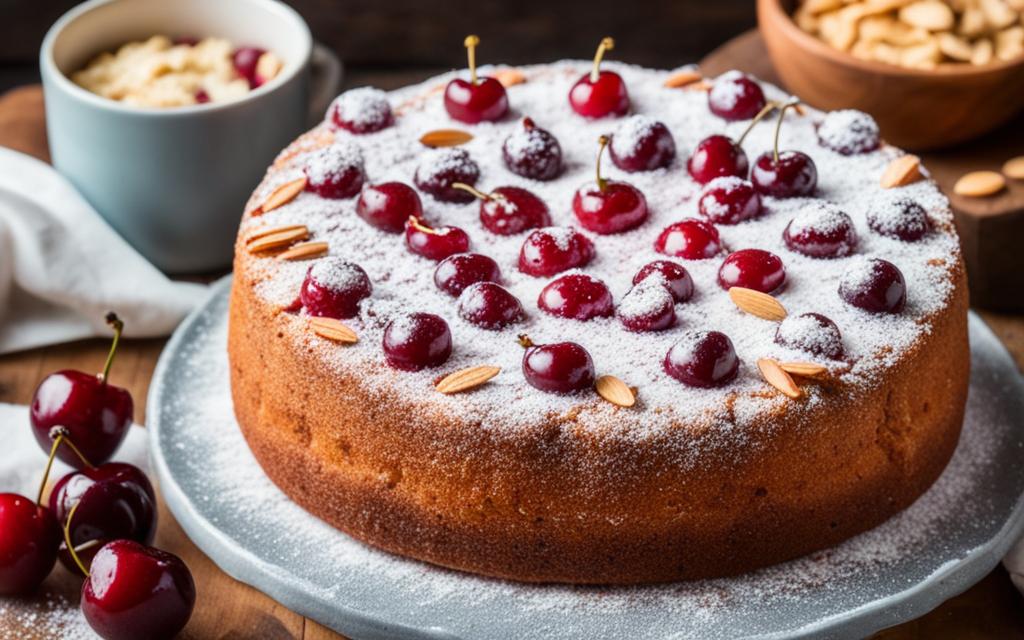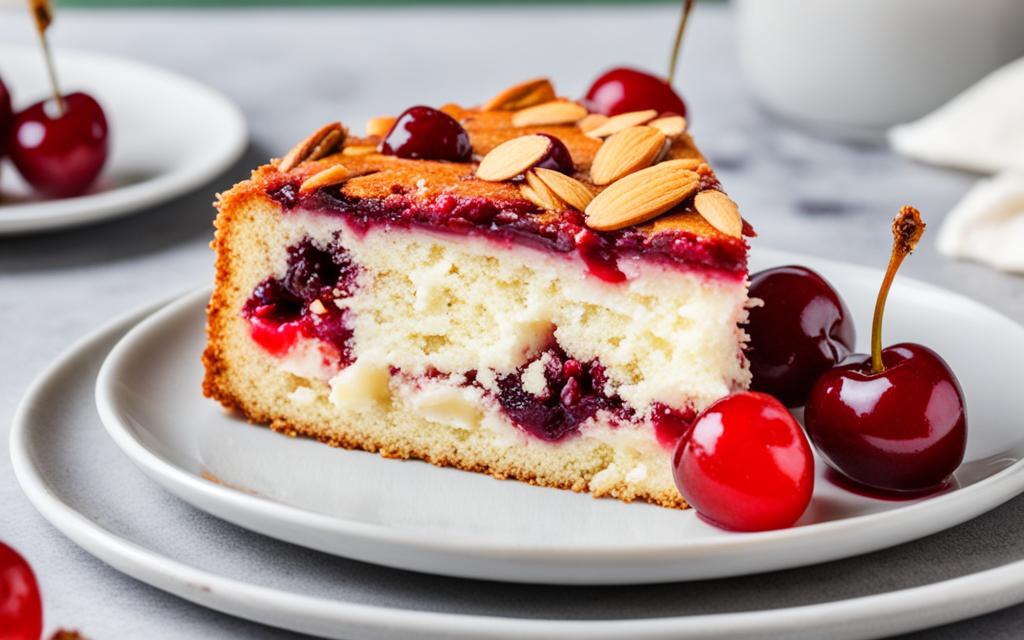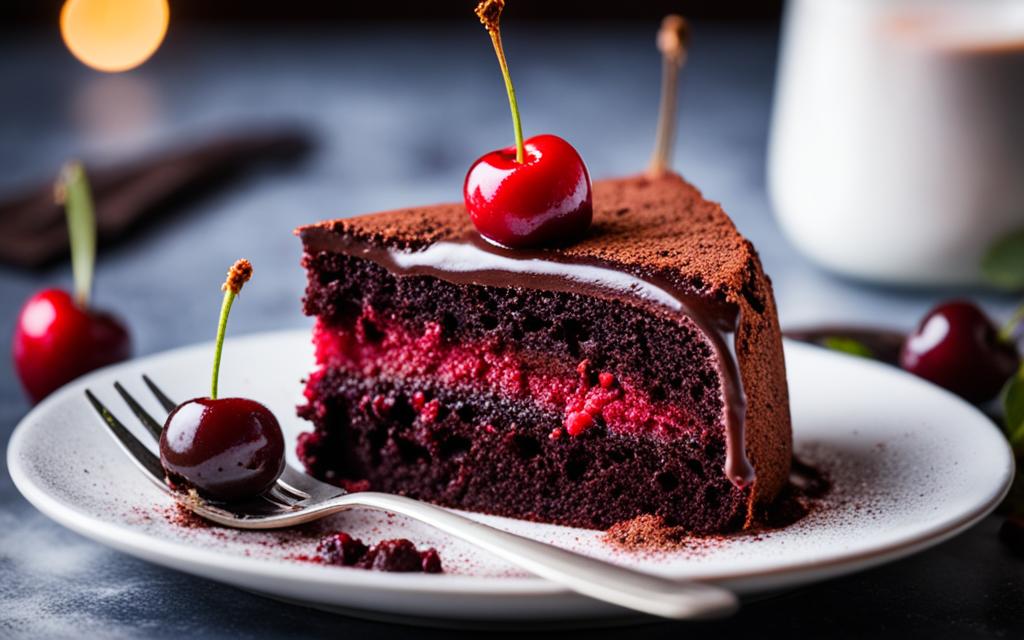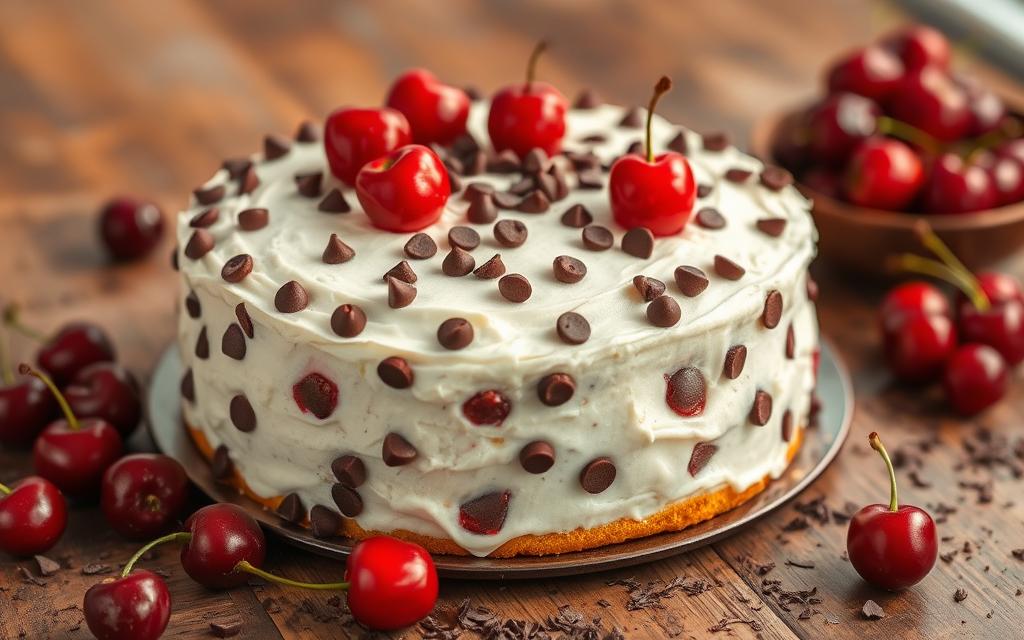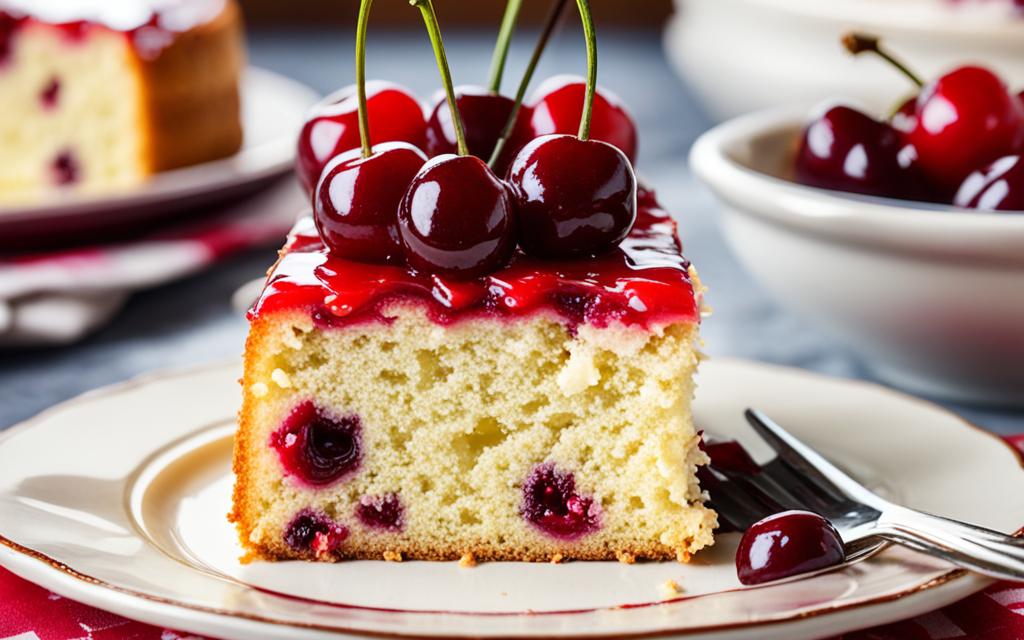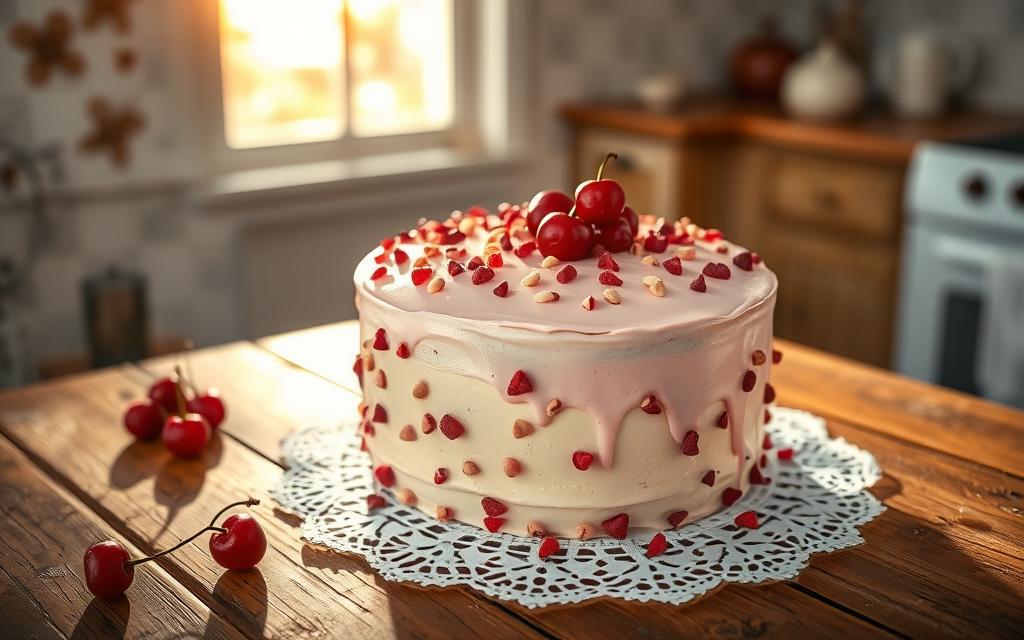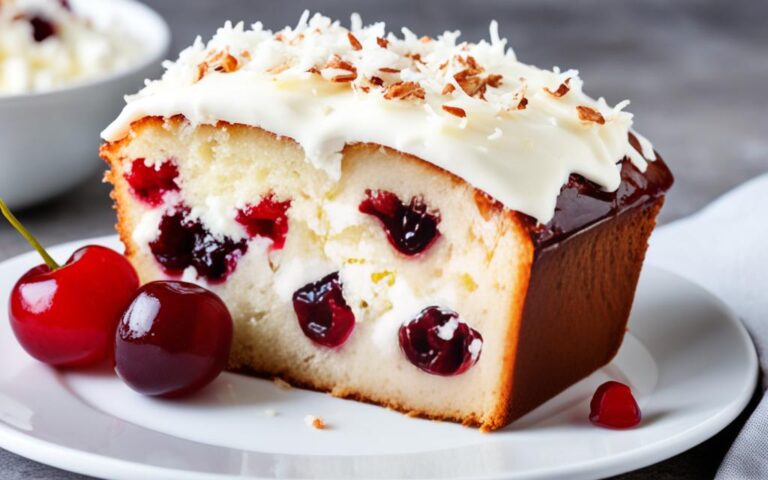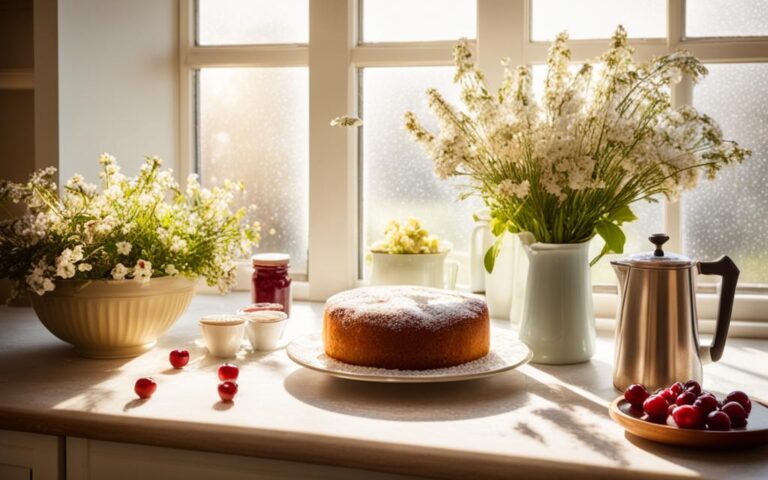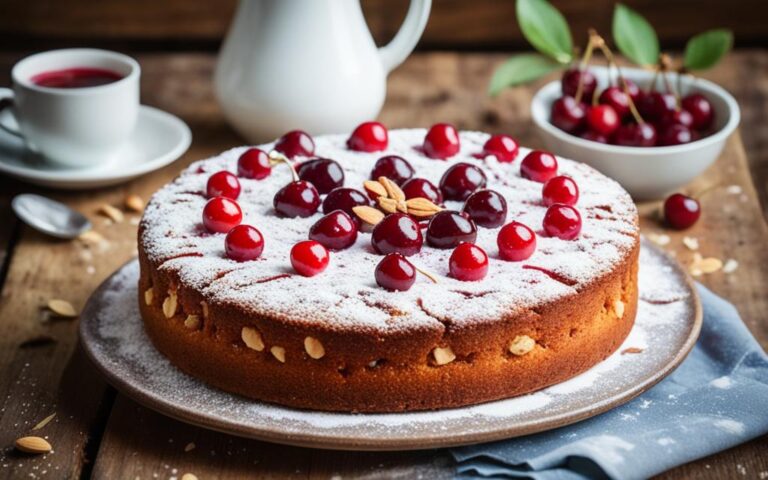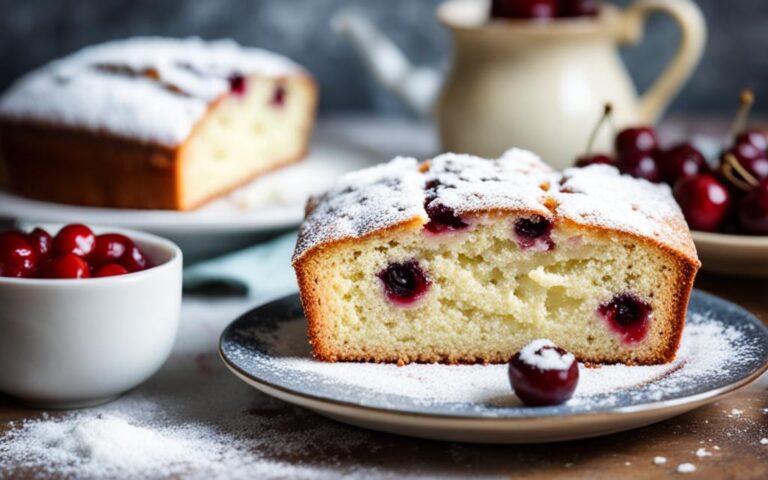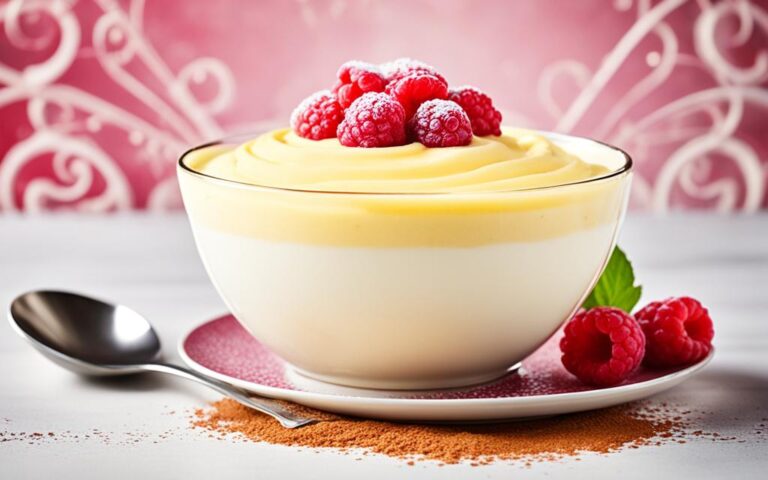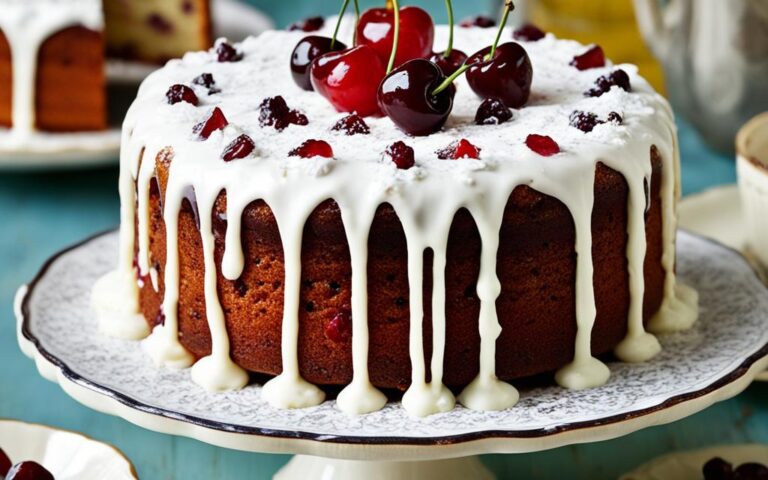Traditional Cherry Genoa Cake: Rich and Dense Delight
Welcome to the amazing world of Cherry Genoa Cake. This classic cake is beloved by many for its rich taste. Every bite is like a celebration, filled with the goodness of cherries.
The first step in making this special cake is picking the best cherries. They’re cut into large pieces to keep the cherry goodness in every slice.
Our bakers then mix butter and sugar until it’s smooth and fluffy. Cherries are added, which give the cake its sweet taste. This mix makes the cake’s flavor perfect.
Next, we mix in flour and baking powder carefully. This makes the cake both fluffy and rich. It’s a special balance that makes this cake so good.
We then add almonds mixed with some cherries – this adds a nice crunch. Almond extract and milk are the final touches. They boost the taste of the cake.
The batter is put into the baking tin. We decorate it with the rest of the cherries. Then, it’s time to bake. As it bakes, the sweet smell spreads everywhere.
After about 50 minutes, a perfect, golden cake comes out. It’s covered and baked a bit more. This makes the inside soft and delightful.
Now, we let the cake cool. This makes the flavors come together just right. Enjoy it fresh or save some for later. It’s a wonderful treat.
Next, learn more about cakes and gateaux. We’ll share their stories and special kinds. Get ready to taste and savor the most amazing cakes.
A Brief History of Cakes
Cakes have a long and interesting history. They started in Europe in the 17th century. At that time, cake hoops for shaping and sweet boiled icings were popular. These cakes were made with refined sugar.
The kind of cakes we see today really took off in the 19th century. They began using flour and baking powder instead of yeast. This made them lighter and softer. Later, in the 20th century, cakes started to get covered in buttercream frosting.
Over time, cakes picked up different flavors, fillings, and decorations. These reflected the tastes of the regions where they were made. Cakes have always been special and personalized, showing up at big celebrations.
“The history of cakes is a testament to the ingenuity and creativity of bakers throughout the ages. From simple beginnings to the elaborate cakes we enjoy today, it’s fascinating to see how this beloved dessert has evolved.”
Today, we have tons of cake choices. They range from classic butter cakes to rich chocolate delights. These cakes are made with care. They might have fancy designs, sugar flowers, or even personal messages.
Notable Moments in Cake History
- The mid-17th century: The precursor to modern cakes comes about in Europe, using cake hoops and boiled icing.
- The 19th century: Cakes as we know them today started becoming popular. They used flour and baking powder instead of yeast.
- The early 20th century: Buttercream frostings became a hit, making cakes even more delicious with their creaminess.
Cultural Influences on Cake Evolution
| Region | Cake Style | Notable Features |
|---|---|---|
| France | Gateau | Pastries made with various types of dough, filled with indulgent ingredients like whipped cream, fruits, nuts, or chocolate. |
| United States | Layer Cake | Cakes made with multiple layers of sponge cake or butter cake, filled and frosted with a variety of flavors such as chocolate, vanilla, or fruit. |
| Italy | Tiramisu | A coffee-flavored dessert made with layers of ladyfingers soaked in coffee and mascarpone cheese. |
The Heritage of Gateau: Exploring Cake Varieties
The term “gateau” covers many French patisserie items, showing French pastry making at its best. These desserts use various kinds of dough. You have the light puff pastry, the handy shortcrust pastry, and choux pastry that’s fluffy and delicate. The selection opens the door to a variety of beautiful cakes, each offering special tastes and features.
Gateaux are known for their rich fillings, like smooth whipped cream, fresh fruits, nuts, or chocolate. In France, gateaux are seen as luxurious. They often have detailed decorations, like fresh fruits or light whipped cream on top. This tradition has been around for centuries. Different provinces in France have shaped unique cakes, showing France’s broad culinary heritage.
The Gateau St. Honore, for example, blends puff pastry, custard, and caramelized choux. It showcases France’s knack for combining flavors and textures. Then there’s the Gateau des rois, meant for Epiphany celebrations. It has puff pastry with almond cream, making each taste a joy.
Today, people all over enjoy and are in awe of gateaux. Various cultures have made their own takes on these cakes. From Austria’s detail-rich tortes to Scandinavia’s grand layer cakes, gateaux symbolize joy and luxury.
FAQ
What is the traditional Cherry Genoa Cake?
The traditional Cherry Genoa Cake is a dense and delicious treat. It’s been a favorite for a long time. To make it, you mix butter and sugar. Then, you add eggs, flour, and baking powder.
Mix in almonds, almond extract, and milk. Spoon the batter into a tin. Top it with cherries and bake it until it’s just right.
How did cakes originate?
The history of cakes is both long and interesting. Modern cakes first appeared in Europe during the 1600s. This was possible because of new technology and ingredients.
People used cake hoops to shape their creations. As time went on, cakes changed. In the 1800s, they started using refined flour and baking powder. And in the 1900s, buttercream frostings became the norm.
What are gateaux?
Gateaux, or “gateau” in French, are a variety of pastries. They include items like puff pastry and choux pastry. These pastries may be filled with cream, fruit, nuts, or chocolate.
In France, gateaux are famous for their fancy looks. They’re often decorated with fresh fruit or cream. Each French region has its own special gateaux.

